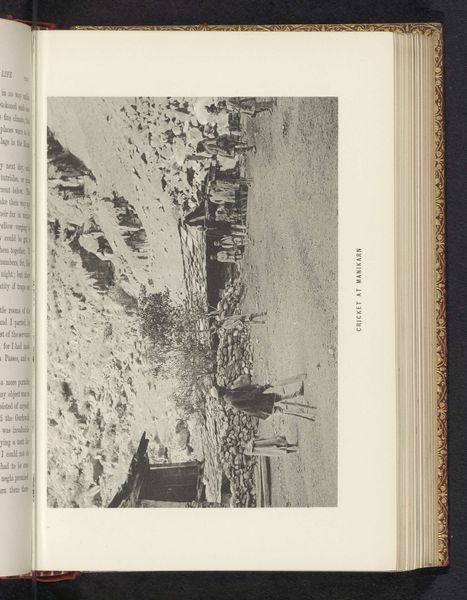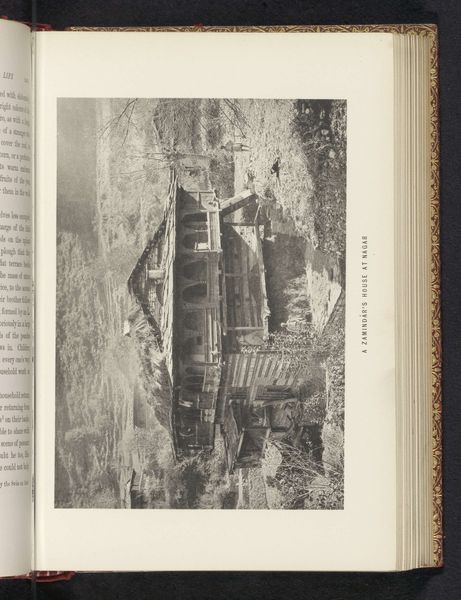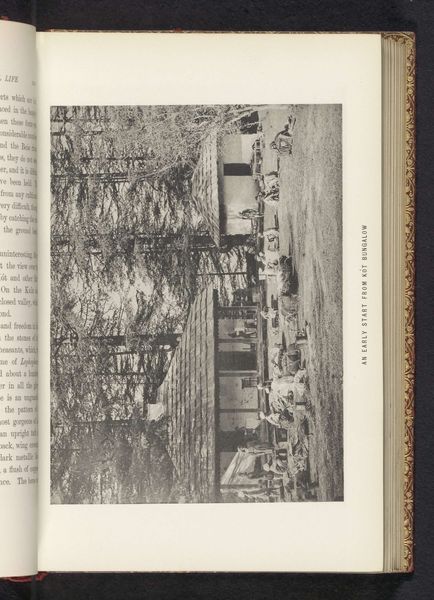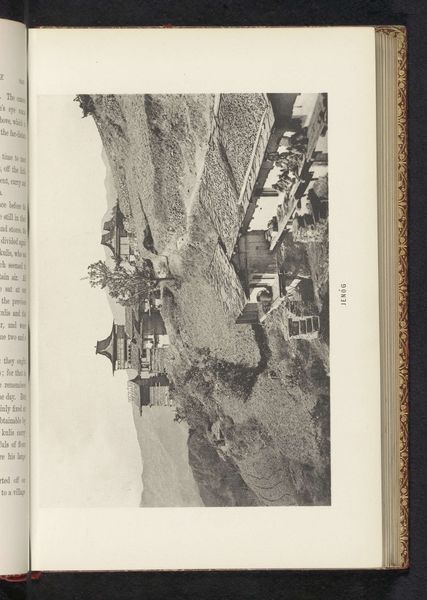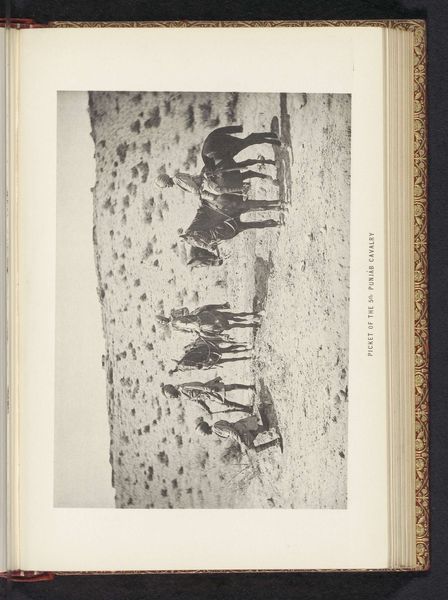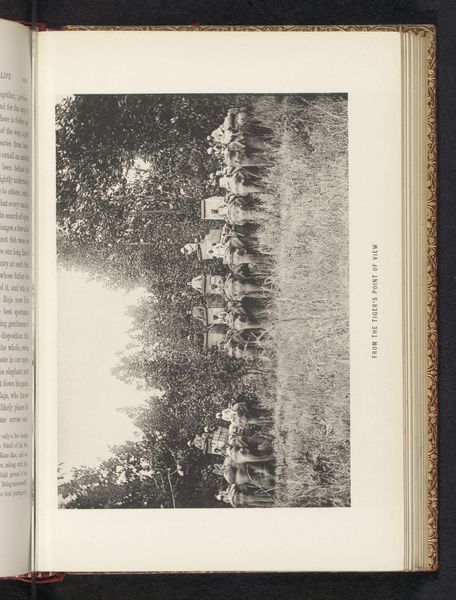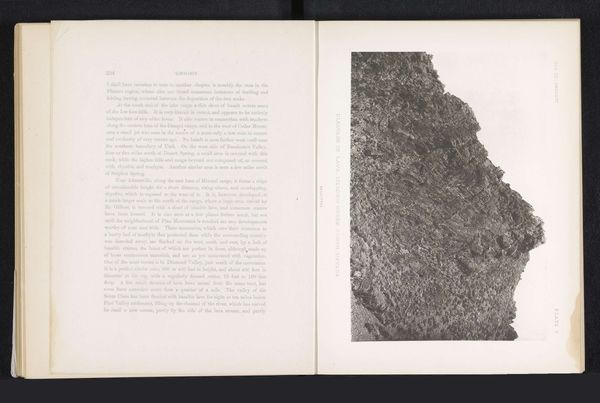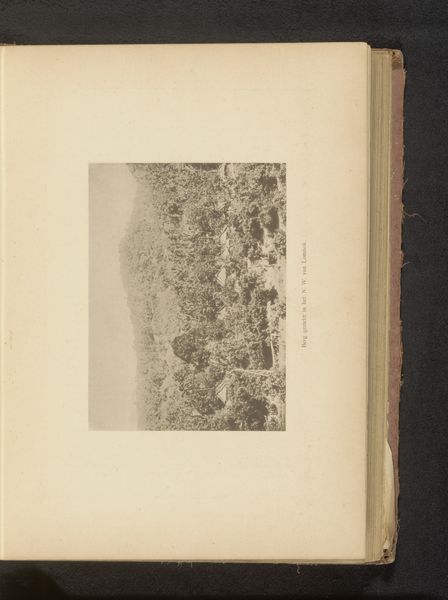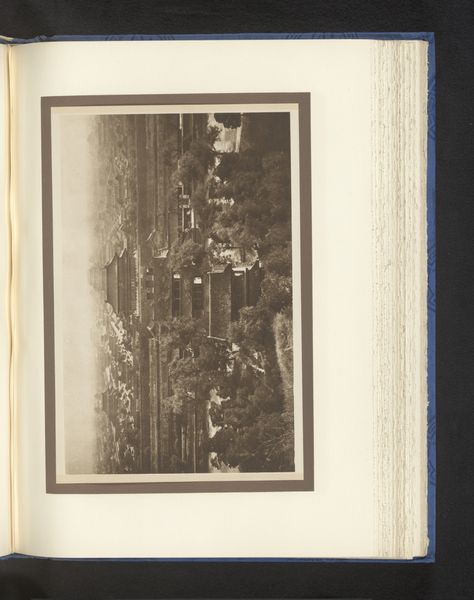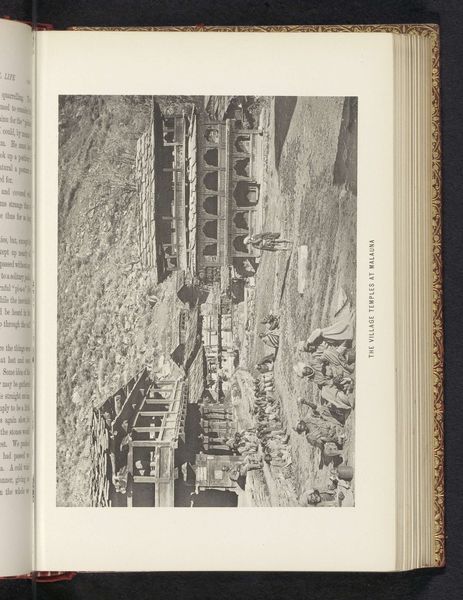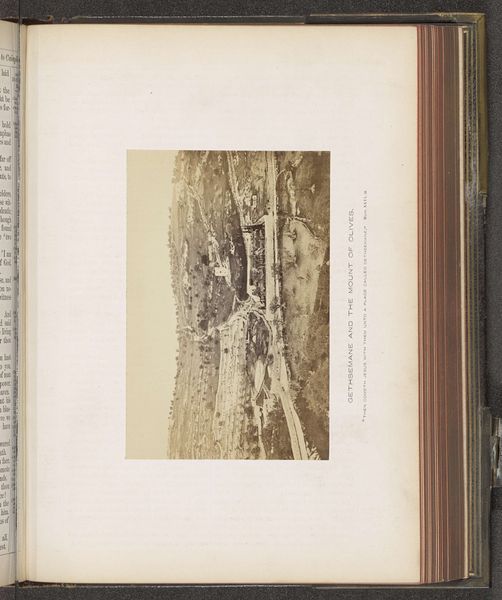
print, photography, albumen-print
# print
#
landscape
#
photography
#
coloured pencil
#
orientalism
#
genre-painting
#
albumen-print
#
realism
Dimensions: height 119 mm, width 167 mm
Copyright: Rijks Museum: Open Domain
Curator: Here we have a print, an albumen print to be precise, of “Nagar Fair,” taken before 1895 by Frederick Saint John Gore. Looking at it now, I am struck by the sheer volume of humanity on display. What leaps out at you? Editor: An overhead view—the gathering crowds seem almost like ants viewed from above. It's fascinating how it reduces the individual to this kind of anonymous mass. All those lives, aspirations... reduced to a swarming texture. Curator: Yes, the perspective is really something. It positions the viewer—and perhaps the photographer, Gore—as distant, observing from a removed position. We can explore how that perspective shapes meaning within the context of colonial visual culture, what this distance does and why? Editor: Absolutely. This print, likely intended for Western consumption, aestheticizes this huge event, turns human gathering into a commodity in a way, to be packaged and distributed. Think of the process: the chemical preparation of the albumen, the exposure, the developing—each step a form of material labor imposed upon a scene ripe with it, teeming with individuals also working. Curator: Gore captured this teeming moment in history. And, with his work appearing amidst the broader context of Orientalism—a lens through which the West viewed the East— I feel this perspective really adds something, giving it almost that birds eye-like scope and detail that he wanted the audience to enjoy. I think for Gore it was not so much labor in terms of oppression and capital but moreso he might have wanted his intended western viewers to explore and maybe revel in a world that to them seemed teeming and bursting with energy. Editor: But even if Gore's intentions were benign, this process of image-making inherently mediates reality, controlling the narrative through its technological framework and distribution. This speaks directly to the ways power operates on society—even when presented as ‘objective.’ Curator: Well put. Thinking about "Nagar Fair", its process, how its labor is both literally within its frame, also through what hands it went. it encourages new appreciation and deeper insight. Editor: I completely agree. A truly complex and evocative artwork, ready for deeper consideration and dialogue.
Comments
No comments
Be the first to comment and join the conversation on the ultimate creative platform.
